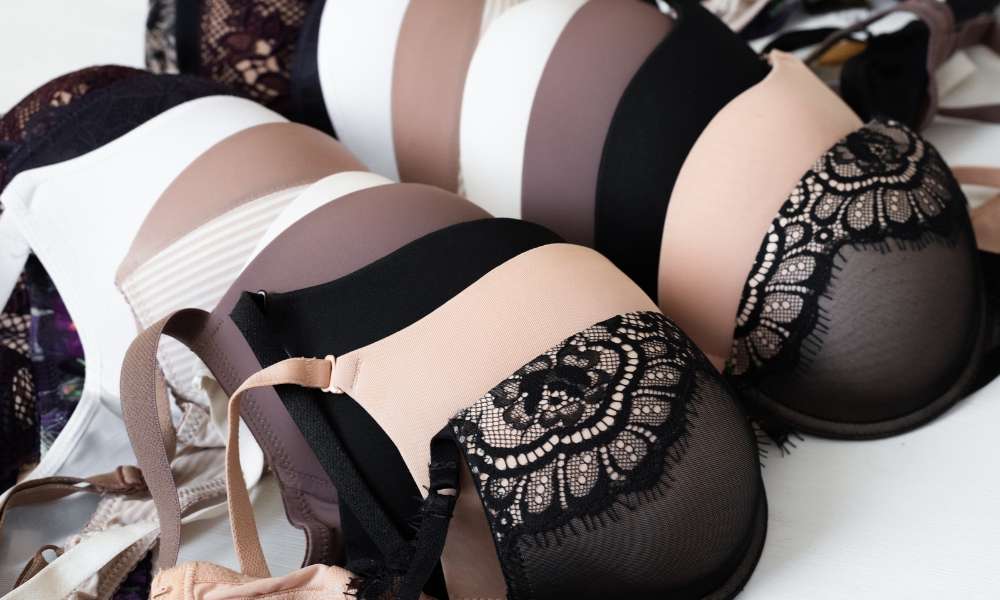Bra Guide: Evolution, Fit, Care, and Fashion Essentials
Explore the complete guide to bras—from their historical evolution to modern designs, materials, and proper fit. Learn how to choose the right size, care for different fabrics, and pick styles for comfort, support, and self-expression. Ideal for anyone looking to improve bra fit, breast health, and wardrobe confidence.

Finding the Right Fit
A correctly fitted bra can transform daily comfort and long-term well-being. Poorly fitted bras commonly contribute to back pain, shoulder tension, and slumped posture. Because bodies change with weight shifts, pregnancy, aging, and hormonal cycles, getting measured professionally at least once a year is a smart habit. Many lingerie shops provide complimentary fittings that assess band and cup fit, strap placement, and how the garment sits during movement.
Understanding the fit basics helps too: the band should feel snug but not restrictive, cups should fully contain breast tissue without spillage or gaping, and straps should be adjustable to balance support without digging into shoulders. A well-fitting bra distributes weight evenly, reduces pressure points, and improves how clothing sits on the body.
Fabrics and Construction Techniques
Today’s bras are engineered from a range of materials to balance comfort, support, and aesthetics. Natural fibers like cotton offer breathability and softness, making them popular for everyday wear. Synthetic blends and performance fabrics provide moisture-wicking and quick-drying properties, which are ideal for activewear and humid conditions. For special occasions, silk and lace deliver a luxurious look and feel but often require gentler care.
Construction details make a big difference. Molded cups give a smooth silhouette under clothing, underwires add structural support, and multi-part cup construction can improve shape and lift. Wide bands and reinforced side panels stabilize the torso, while adjustable straps and multiple hook-and-eye closures allow for a customized fit. Designers also incorporate stretch panels and mesh for breathability and movement.
Care and Longevity
Proper maintenance preserves shape, elasticity, and support over time. Hand washing bras in cool water with a mild detergent is the gold standard: it minimizes wear on elastics and delicate trims. If you use a machine, place bras in a lingerie bag and select a gentle cycle with cold water. Avoid tumble drying and high heat, which break down elastic fibers; instead, reshape cups and air dry flat or hang by the band.
How you store bras matters too. Stack molded cups together or lay them flat to protect their contours. Fasten hooks before laundering to prevent snagging. Rotating several bras across the week allows elastics to rest and extends the lifespan of each piece.
Health and Support Considerations
Adequate support is more than comfort; it plays a role in breast health. During high-impact activities, the right sports bra can limit excessive movement, reducing strain on Cooper’s ligaments and minimizing exercise-related breast pain. For those with larger busts, structured bras with wide bands and reinforced straps can relieve back and shoulder tension and improve posture.
Moisture-wicking fabrics and breathable construction help prevent skin irritation and maintain hygiene, especially during exercise or hot weather. Specialized bras, such as post-surgical or maternity designs, provide features tailored to recovery or nursing needs, including easy access, extra support, and gentle materials.
Market Options and Typical Pricing
Below is a snapshot of common bra categories and typical price ranges to help you plan purchases. Styles and prices vary by brand, materials, and technical features.
| Bra Type | Average Price Range | Key Features |
|---|---|---|
| Basic T-Shirt Bra | $25 - $45 | Smooth cups, everyday concealment |
| Sports Bra | $30 - $70 | Impact-specific support, moisture management |
| Wireless Bra | $20 - $50 | Comfortable, flexible fit, natural shaping |
| Push-Up Bra | $35 - $65 | Added lift, padding choices |
| Specialty / Nursing Bra | $40 - $80 | Functional access, extra comfort |
Prices are indicative and based on current market information; they may change over time. Independent research is advised before making purchasing decisions.
Style, Identity, and Inclusivity
Beyond utility, bras have become tools of personal expression. Designers now offer a wide palette of colors, prints, and trims, transforming undergarments into visible parts of an outfit or a statement in their own right. The industry is also expanding size ranges and adapting patterns to serve diverse body types, which supports inclusivity and body-positive messaging.
Whether someone prioritizes the invisible support of a t-shirt bra, the sculpting effect of a push-up, or the technical function of a sports bra, modern options let people choose based on comfort, activity, or style. Many brands are responding to demand for sustainable materials and transparent sizing, giving shoppers more choice and control.
Making Smart Choices
When selecting bras, consider your lifestyle first: prioritize high-support styles for exercise, comfortable breathable fabrics for daily wear, and specialty pieces for nursing or medical needs. Try a variety of brands and sizes—measurements can differ—and pay attention to how a bra feels after an hour and after a full day of wear.
Keep a small rotation of well-fitting bras and retire those that lose elasticity or no longer fit. Investing in quality where you need it—such as a reliable sports bra or a well-constructed everyday bra—often pays off in comfort and durability.
This article is for informational purposes only and should not be considered medical advice. Please consult a qualified healthcare professional for personalized guidance and treatment.





